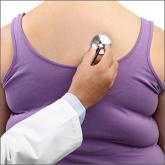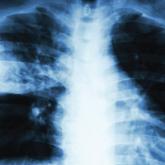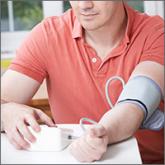Article

Bariatric Surgery + Medical Therapy: Effective Tx for T2DM?
- Author:
- Kortnee Y. Roberson, MD
- Emily White Van Gompel, MD
- Jennie B. Jarrett, PharmD, BCPS, MMedEd
Short-term studies have indicated “Yes.” But does a long-term randomized controlled trial give this combination a thumbs up?
Article

Bariatric surgery + medical therapy: Effective Tx for T2DM?
- Author:
- Kortnee Y. Roberson, MD
- Emily White Van Gompel, MD
- Jennie B. Jarrett, PharmD, BCPS, MMedEd
Short-term studies have indicated “Yes,” but does a long-term randomized controlled trial give it a thumbs up?
Article

Does Azithromycin Have a Role in Cesarean Sections?
- Author:
- Gregory Castelli, PharmD, BCPS, BC-ADM
- Allison Flaherty, DO
- Jennie B. Jarrett, PharmD, BCPS, MMedEd
Adding azithromycin to the usual antibiotic protocol in nonelective c-sections reduces infections, research shows. But not everyone can take...
Article

Does azithromycin have a role in cesarean sections?
- Author:
- Gregory Castelli, PharmD, BCPS, BC-ADM
- Allison Flaherty, DO
- Jennie B. Jarrett, PharmD, BCPS, MMedEd
Yes, adding azithromycin to the usual antibiotic protocol in nonelective c-sections reduces infections. But not everyone can take advantage of it...
Article

When to “CAP” Off Pneumonia Treatment
- Author:
- Gregory Castelli, PharmD
- Jennie B. Jarrett, PharmD, BCPS, MMedEd
Let's be frank: Practitioners often ignore guidelines recommending a five-day course of antibiotics for hospitalized patients with community-...
Article

When to “CAP” off treatment for pneumonia
- Author:
- Gregory Castelli, PharmD
- Jennie B. Jarrett, PharmD, BCPS, MMedEd
Is 5 days of antibiotic therapy really sufficient for adults hospitalized with community-acquired pneumonia?
Article
Oral Agent Offers Relief From Generalized Hyperhidrosis
- Author:
- Jennie B. Jarrett, PharmD, BCPS, MMedEd
- David Moss, MD
This common problem involving localized sweating can significantly lower quality of life for affected patients. A new treatment option goes down...
Article

Oral agent offers relief from generalized hyperhidrosis
- Author:
- Jennie B. Jarrett, PharmD, BCPS, MMedEd
- David Moss, MD
An inexpensive and well-tolerated anticholinergic reduces sweating in those with localized—and generalized—hyperhidrosis.
Article
When Can Exercise Supplant Surgery for Degenerative Meniscal Tears?
- Author:
- Jennie B. Jarrett, PharmD, BCPS, MMedEd
- Sandra Sauereisen, MD, MPH
Should patients with medial degenerative meniscal tears always undergo surgery? Not according to a recent study, which suggests physical therapy...
Article

When can exercise supplant surgery for degenerative meniscal tears?
- Author:
- Jennie B. Jarrett, PharmD, BCPS, MMedEd
- Sandra Sauereisen, MD, MPH
Patients with a medial, degenerative meniscal tear and a minimal history of osteoarthritis make good candidates for physical therapy—and there is...
Article
Oral Rehydration Therapy for Kids: A More Palatable Alternative
- Author:
- Carin E. Reust, MD, MSPH
- James J. Stevermer, MD, MSPH
- Jennie B. Jarrett, PharmD, BCPS, MMedEd
Getting kids to drink electrolyte solutions following episodes of mild gastroenteritis can be a challenge. Thankfully, parents can rest easy—a new...
Article

A more palatable alternative to oral rehydration therapy for kids
- Author:
- Carin E. Reust, MD, MSPH
- James J. Stevermer, MD, MSPH
- Jennie B. Jarrett, PharmD, BCPS, MMedEd
Parents no longer need to struggle to get their kids to drink electrolyte solutions during episodes of mild gastroenteritis; apple juice works...
Article

Monitoring home BP readings just got easier
- Author:
- Jennie B. Jarrett, PharmD, BCPS, MMedEd
- Linda Hogan, PhD
- Corey Lyon, DO
- Kate Rowland, MD, MS
This novel method of identifying patients with uncontrolled hypertension correlates well with ambulatory BP monitoring.
